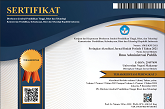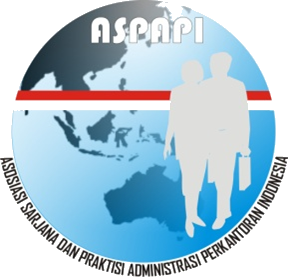Sentiment Analysis: Sekolah Tatap Muka in the New Normal Era
(1) Bimbingan dan Konseling, Universitas Borneo Tarakan
(2) Program Pascasarjana, Universitas Negeri Makassar
(3) Pendidikan Administrasi Perkantoran, Universitas Negeri Makassar
(4) Pendidikan Ekonomi, STKIP Pembangunan Indonesia
(5) Pendidikan Administrasi Perkantoran, Universitas Negeri Makassar
(*) Corresponding Author
DOI: https://doi.org/10.26858/jiap.v12i1.33020
Abstract
Through the Circular of the Minister of Education, Culture, Research, and Technology (Mendikbudristek) Number 3 of 2022, face-to-face learning is limited to educational units following the provisions stipulated in the Joint Decree of the Four Ministers. In addition, it is explained that parents/guardians of students are given the choice to permit their children to take part in Limited face-to-face learning or distance learning. This study aimed to determine public sentiment regarding Sekolah Tatap Muka. To achieve the research objectives, sentiment analysis is used using the Drone Emprit application. Data collection was obtained from the Twitter social media application, the data obtained were posts from February 1, 2022, to March 31, 2022. The results showed that there were 898 tweets or 29.23 percent of positive sentiments about sekolah tatap muka, and there were 1,954 tweets or 63.61 percent of negative sentiments about sekolah tatap muka, and there were 220 tweets or 7.16 percent of neutral sentiments about sekolah tatap muka.
Keywords
Full Text:
PDFReferences
Arhas, S. H., Niswaty R., Cahyono T., Rahman N. (2022). Social Network Analysis: E-Marketing Sales of “Kue Lebaran” in the Perspective of the Technology Acceptance Model. Pinisi Business Administration Review, 4(1), 45-52
Bandura, A., & Schunk, D. H. (1981). Cultivating competence, self-efficacy, and intrinsic interest through proximal self-motivation. Journal of Personality and Social Psychology, 41(3), 586.
Bhargava, S., Negbenebor, N., Sadoughifar, R., Ahmad, S., & Kroumpouzos, G. (2021). Virtual conferences and e-learning in dermatology during COVID-19 pandemic: Results of a web-based, global survey. Clinics in Dermatology. https://doi.org/https://doi.org/10.1016/j.clindermatol.2021.06.002
Chiu, T. K. F. (2022). Applying the self-determination theory (SDT) to explain student engagement in online learning during the COVID-19 pandemic. Journal of Research on Technology in Education, 54(sup1), S14–S30.
Darwis, M., Arhas, S. H., & Nasrullah, M. (2021). Online Learning Based on the Borneo E-Learning Application (A Study of Student Satisfaction Analysis in the Use of the BEL Application at the Universitas Borneo Tarakan). International Joined Conference on Social Science (ICSS 2021), 576–581.
Guri-Rosenblit, S. (2018). E-teaching in higher education: An essential prerequisite for e-learning.
Janz, N. K., & Becker, M. H. (1984). The Health Belief Model: A Decade Later. Health Education & Behavior. https://doi.org/10.1177/109019818401100101
Kozinets, R. V. (2006). Netnography. Handbook of Qualitative Research Methods in Marketing, 129–142.
Orlov, G., McKee, D., Berry, J., Boyle, A., DiCiccio, T., Ransom, T., Rees-Jones, A., & Stoye, J. (2021). Learning during the COVID-19 pandemic: It is not who you teach, but how you teach. Economics Letters, 202, 109812. https://doi.org/https://doi.org/10.1016/j.econlet.2021.109812
Roman, M., & Plopeanu, A.-P. (2021). The effectiveness of the emergency eLearning during the COVID-19 pandemic. The case of higher education in economics in Romania. International Review of Economics Education, 37, 100218. https://doi.org/https://doi.org/10.1016/j.iree.2021.100218
Rosenstock, I M. (1990). The Health Belief Model: Explaining health behavior through expectancies. Health Behavior and Health Education.
Rosenstock, Irwin M, Strecher, V. J., & Becker, M. H. (1988). Social learning theory and the health belief model. Health Education Quarterly, 15(2), 175–183.
Sahir, S. H., Ramadhana, R. S. A., Marpaung, M. F. R., Munthe, S. R., & Watrianthos, R. (2021). Online learning sentiment analysis during the covid-19 Indonesia pandemic using Twitter data. IOP Conference Series: Materials Science and Engineering, 1156(1), 12011.
Strecher, V. J., & Rosenstock, I. M. (1997). The health belief model. Cambridge Handbook of Psychology, Health, and Medicine, 113, 117.
Suprianto, S., Arhas, S. H., Mahmuddin, M., & Siagian, A. O. (2020). The Effectiveness of Online Learning Amid the COVID-19 Pandemic. Jurnal Ad’ministrare, 7(2), 321–330.
Szopiński, T., & Bachnik, K. (2022). Student evaluation of online learning during the COVID-19 pandemic. Technological Forecasting and Social Change, 174, 121203.
Article Metrics
Abstract view : 265 times | PDF view : 69 timesRefbacks
- There are currently no refbacks.
Copyright (c) 2022 Suprianto Suprianto, Risma Niswaty, Sitti Hardiyanti Arhas, Nawir Rahman, Rudi Salam

This work is licensed under a Creative Commons Attribution 4.0 International License.
Diterbitkan oleh:
Program Studi Ilmu Administrasi Publik
Program Pascasarjana Universitas Negeri Makassar
JIAP Index By:

This work is licensed under a Creative Commons Attribution 4.0 International License.










